#Modern Design Aquascaping
Text
Aquascaping Unveiled: Exploring Design Diversity and Modern Innovations
Aquascaping is the art and practice of creating underwater landscapes in aquariums. It involves arranging aquatic plants, rocks, stones, wood, and other decorative elements in a visually appealing and harmonious way. The goal of aquascaping is to create a natural-looking aquatic environment that showcases the beauty of underwater life.
There are several different types of aquascape designs, each with its own characteristics and principles. Some of the popular aquascape styles include:
Nature Aquarium: Developed by renowned aquarist Takashi Amano, this style focuses on creating a miniature version of a natural landscape, typically featuring lush plant growth, open spaces, and a sense of depth.
Dutch Aquarium: This style emphasizes a meticulously arranged and densely planted tank, often showcasing a wide variety of plant species with vibrant colors and intricate patterns. It aims to create a garden-like appearance.
Iwagumi: Originating from Japan, the Iwagumi style centers around the use of rocks as the main focal point. It typically features a simple layout with a limited number of plant species, emphasizing the arrangement and positioning of rocks to create a sense of balance and tranquility.
Biotope Aquarium: This style seeks to replicate a specific natural habitat, such as a river, lake, or a specific region's ecosystem. It involves carefully selecting plants, rocks, and fish species that are native to the chosen habitat.
In terms of modern aquascaping designs, there are several trends and techniques that have gained popularity in recent years. Some examples include:
Minimalistic Scapes: These aquascapes focus on simplicity, using negative space, minimal plant species, and carefully positioned hardscape elements to create a clean and minimalist aesthetic.
Wabi-Kusa: This style involves creating small, self-sustaining ecosystems in glass containers or shallow trays. It combines aquatic plants and terrestrial plants to create a miniature landscape that requires minimal maintenance.
Paludariums: These setups combine an aquatic section with a terrestrial section, allowing for the cultivation of both aquatic plants and land-based plants, as well as the inclusion of amphibians, reptiles, or other small animals.
Nano Aquascapes: Nano aquascapes refer to small-scale aquariums, often ranging from a few liters to around 30 liters in volume. They require careful planning and attention to detail to create a visually striking and balanced composition within the limited space.
It's important to note that aquascaping is a highly creative and personal art form, and these styles and trends can be adapted and combined in various ways to create unique and innovative designs.
#Modern Design Aquascaping#aquascape#aquascaping#water#design#rock#natural stones#stones#waterfall#fountains#art#Nano Aquascapes#Minimalistic Scapes
2 notes
·
View notes
Photo
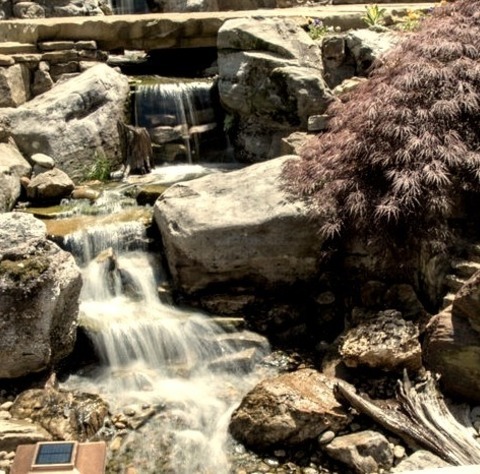
Pond - Landscape
Inspiration for a sizable Asian hillside pond in full sun.
0 notes
Photo

Landscape - Tropical Landscape
Inspiration for a large tropical full sun backyard pond.
0 notes
Photo
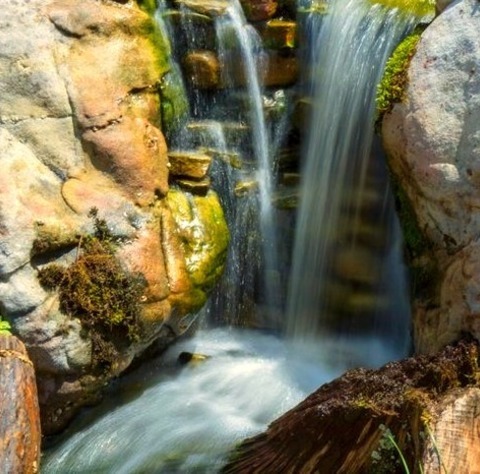
Asian Landscape
#An example of a large asian full sun hillside pond. lenoir city#pond#koi ponds#modern design aquascaping#waterfall
0 notes
Photo
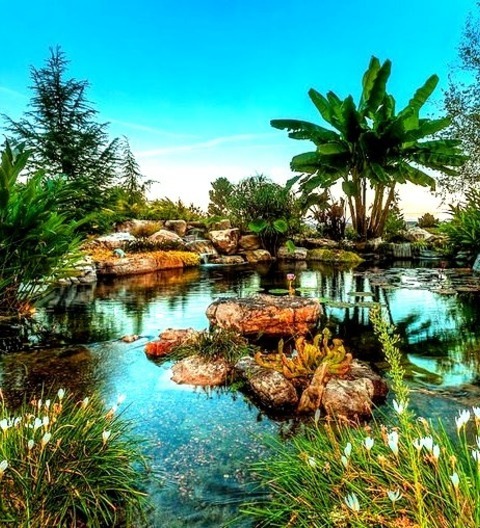
Tropical Landscape - Landscape
#Design ideas for a large tropical full sun backyard pond. fish pond#modern design aquascaping#farragut#pond fish#koi
0 notes
Photo
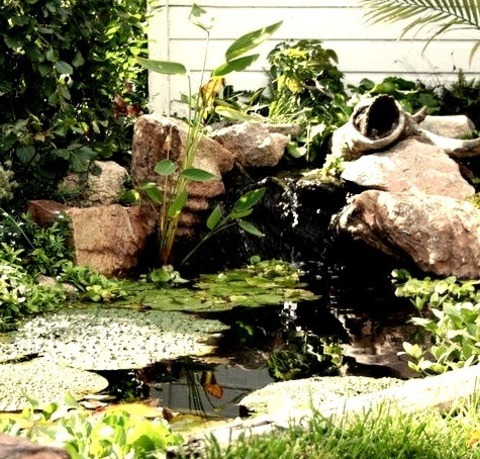
Fountain Landscape (Omaha)
#An example of a large rustic water fountain landscape. statue#fountains#boudler#tuscan urn and vase#modern water fountain#site designer#aquascape
0 notes
Photo

Asian Landscape
#Image of a sizable Asian hillside pond in the full sun. modern design aquascaping#pondless#water feature artist of the year#water fall#farragut#water feature
0 notes
Photo
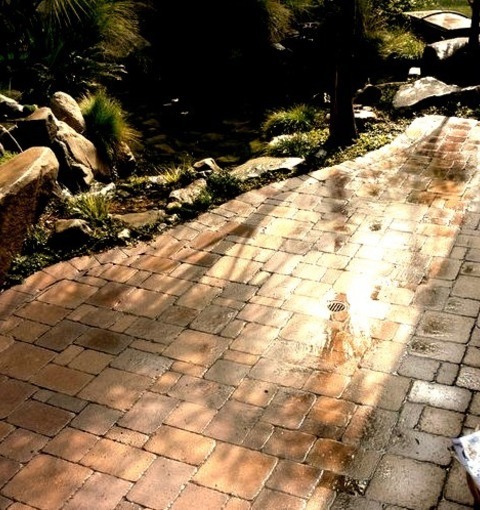
Los Angeles Landscape
#Design ideas for a small modern drought-tolerant and partial sun side yard brick pond in spring. garden#turf#ecosystem#aquascape#grass#pond#succulent
1 note
·
View note
Note
hello ^_^ i think fintan as a modern man would get really into aquascaping… i think he’d appreciate having such a fine level of environmental control. also aquascaping is gardening if i was interested in gardening and i can’t resist giving characters hobbies i have personally. even though im more interested in the fish aspect and fintan would probably be more interested in the design aspect. also have a fun car ride 🙏
this is such a neat & silly idea i love it.
also yeah i love his random gardening hobby in stellarlune. even tho he’s bad at it. i love him.
i wonder what his favorite fish is
12 notes
·
View notes
Text
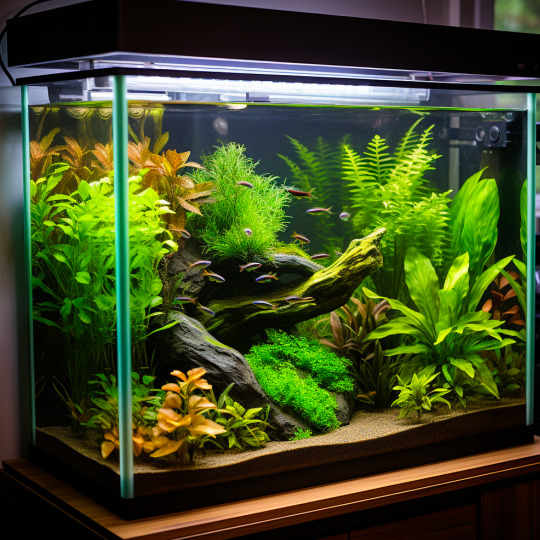
Venture into the futuristic side of aquascaping with our modern fish tank ideas, featuring the latest in aquarium technology and design. Discover how innovative filtration systems, LED lighting, and smart aquarium gadgets can transform your fish tank into a cutting-edge aquatic showcase. For a glimpse into the future of aquascaping, visit our blog and get inspired to modernize your aquarium.
#aquarium#fishkeeping#fishtank#tropicalfish#aquariumhobby#aquascaping#aquascapingideas#fishtankideas#bettafish#guppies#fish tank ideas#aquarium ideas
1 note
·
View note
Text
Elevate Your Aquatic Experience: The Allure of Corner Fish Tanks with Stands
For avid aquarists and interior design enthusiasts alike, the corner fish tank with stand presents a unique and captivating option. Unlike traditional rectangular tanks, these innovative aquariums fit snugly into corners, maximizing space efficiency while creating a stunning focal point in any room. Paired with a stylish stand, these tanks not only provide a secure foundation but also enhance the aesthetic appeal of your aquatic environment. Let's delve into the allure and benefits of corner fish tanks with stands.
Space Optimization: One of the primary advantages of corner fish tanks is their ability to utilize often-overlooked corner spaces. Whether you're decorating a cozy apartment or a spacious living room, these tanks effortlessly blend into their surroundings, making them an ideal choice for areas with limited floor space. By positioning the tank in a corner, you free up valuable real estate for other furniture and décor, allowing you to maximize the functionality and visual appeal of your living space.
Panoramic Views: Corner fish tanks offer panoramic views of your underwater world from multiple angles. Unlike traditional tanks that may only be viewed from the front, corner tanks provide uninterrupted visibility from two adjacent sides, allowing you to appreciate the beauty of your aquatic habitat from different vantage points. This enhanced viewing experience not only enriches your enjoyment of the aquarium but also creates a more immersive and dynamic environment for your aquatic inhabitants.
Stylish Stand Options: The inclusion of a stand elevates the aesthetic appeal of corner fish tanks while providing essential support and stability. Stands come in a variety of styles, ranging from sleek and modern to rustic and ornate, allowing you to choose a design that complements your personal taste and existing décor. Whether you prefer minimalist metal stands or elegant wooden cabinets with storage compartments, there's a stand to suit every aesthetic preference and functional need. Additionally, many stands feature built-in storage space for aquarium supplies, ensuring that your essentials are conveniently within reach while maintaining a clutter-free environment.
Versatile Design Possibilities: With their unique shape and placement, corner fish tanks offer endless design possibilities. Whether you're creating a tropical paradise with vibrant coral reefs and exotic fish species or a tranquil freshwater oasis with lush aquatic plants and graceful swimmers, the compact footprint of corner tanks allows you to unleash your creativity and design a captivating underwater landscape. From aquascaping and décor placement to lighting and filtration arrangements, every aspect of the aquarium can be customized to reflect your personal style and vision.
Enhanced Feng Shui: In the practice of feng shui, the ancient Chinese art of harmonizing energy flow in the environment, corners are considered pivotal points where energy gathers and circulates. By incorporating a corner fish tank into your living space, you can harness the positive energy associated with these areas, creating a harmonious and balanced atmosphere. The gentle movement of water and the vibrant colors of aquatic life further enhance the flow of positive energy, promoting a sense of tranquility and well-being in your home.
In conclusion, corner fish tanks with stands offer a winning combination of space efficiency, aesthetic appeal, and design versatility. Whether you're a seasoned aquarist looking to optimize your living space or a design enthusiast seeking to make a stylish statement, these innovative aquariums are sure to captivate your imagination and elevate your aquatic experience to new heights. With their panoramic views, stylish stands, and endless design possibilities, corner fish tanks are not just aquariums—they're works of art that breathe life into any room.
0 notes
Text
Illuminating Aquascapes: The Art and Science of Aquarium Lights
Aquariums are more than just glass boxes filled with water; they are captivating underwater worlds brimming with life and color. One crucial element that plays a pivotal role in the health and vibrancy of aquarium ecosystems is lighting. In this exploration, we'll dive into the fascinating realm of aquarium lights, uncovering the artistry and science behind creating visually stunning and thriving aquatic landscapes.
1. The Aesthetic Dance of Light: Painting Underwater Canvases
Aquarium lights are the paintbrushes that bring aquatic landscapes to life, creating a visually stunning display that captivates observers. The carefully selected spectrum of light not only highlights the vibrant colors of fish and corals but also accentuates the natural beauty of aquatic plants. From soft, moonlit glows to intense, daylight simulations, the chihiros aquarium lights for sale is in their ability to mimic the natural lighting conditions of diverse underwater environments.
2. The Science of Photosynthesis: Vital for Plant and Coral Health
Beyond aesthetics, aquarium lights play a crucial role in the biological processes occurring within the tank. Photosynthesis, a fundamental process for plants and corals, relies on light to convert carbon dioxide into oxygen and organic compounds. Adequate and appropriate lighting ensures the health and growth of aquatic flora, contributing to the overall balance of the aquarium ecosystem. Modern LED lighting systems are designed to provide customizable spectrums, allowing hobbyists to tailor the lighting conditions to the specific needs of their aquatic inhabitants.
3. Circadian Rhythms for Fish Wellness: Mimicking Natural Light Cycles
Just as humans have circadian rhythms, fish and other aquatic creatures have natural behaviors influenced by the cycle of day and night. Aquarium lights can be programmed to simulate sunrise, daylight, sunset, and moonlight phases, mimicking the natural light cycles of their native habitats. This not only enhances the visual experience for aquarium enthusiasts but also contributes to the overall well-being of the aquatic inhabitants by promoting natural behaviors.
4. Energy Efficiency and Longevity: The Advantages of LED Technology
The evolution of aquarium lighting has seen a shift towards energy-efficient and long-lasting LED technology. LED lights not only consume less energy, reducing electricity costs for hobbyists, but they also emit less heat, preventing temperature fluctuations in the aquarium. The longevity of LED bulbs ensures a consistent and reliable light source, eliminating the frequent replacements associated with traditional lighting technologies.
5. The Art of Controllability: Tailoring Lighting to Individual Tanks
Modern aquarium lighting systems offer a level of controllability that was once unimaginable. Enthusiasts can fine-tune the intensity, color spectrum, and duration of light exposure to suit the specific needs of their aquarium. Whether creating a lush planted tank, a coral reef oasis, or a serene freshwater community, the ability to customize lighting parameters adds an artistic dimension to the hobby.
In conclusion, aquarium lights are more than just accessories; they are essential components that influence the health, beauty, and dynamics of underwater ecosystems. From the artful illumination of aquatic landscapes to the scientific support of photosynthesis and circadian rhythms, the world of aquarium lights is a harmonious blend of aesthetics and functionality. As aquarium enthusiasts continue to explore the possibilities of lighting technology, the future promises even more breathtaking displays of underwater artistry in the comfort of our own homes.
Source Url:-https://sites.google.com/view/backwateraquaticscom54/home
0 notes
Text
How Fluval Sea Evo Becomes Your Ultimate Aquarium Kit?
Are you ‘renovating’ your aquarium? Read about this versatile aquarium kit.
Aquarium-loving people cannot stop thinking about their aquarium’s health. From washing gravel rocks and ornaments to setting up the aquascape to installing air tubing, you can engage in a wide range of activities for making the little marine park special.

In the world of versatile systems, the Fluval Sea Evo offers the performance of multiple times its size. With a powerful 3-stage filtration system, this aquarium kit ensures the aquatics get the accurate water quality they need. The super bright 14000 K LED enlivens an optimal environment for healthy coral growth and conditioning. Thus, you can build a mini reef of color in the aquarium.
The ultra-modern design hides back filtration area with a stylish honeycomb. The sleek design of this aquarium kit does have more than a waterproof aluminum casing and convenient illumination system for day/night. The filter output nozzle reduces surface agitation for the fishes to intake normal oxygen levels without difference they have been already accustomed to. The multifunctional canopy door is a perfect addition.
Another aquarium kit like Fluval Edge has a myriad of features for specific aquarium needs. If you are in the search of aquarium kits, you can browse various Fluval Spec to identify the needs you have in the aquarium. We recommend feature and price comparison for choosing the best ones.
The Internet offers you a large variety to explore in this section. Don’t forget to check the standard policies of shopping online and how it covers your transaction.
1 note
·
View note
Text
Koi Pond Designers in Bangalore
Design Aquatica has expert architects for designing cost-effective formal, informal, modern and classy koi ponds with waterproofing systems depending on the substrate of your aquascape.
We provide water purification services, pond repair and maintenance services for your koi ponds.

1 note
·
View note
Text
20 Outdoor Koi Ponds to Add a Refreshing Positive Garden Aura
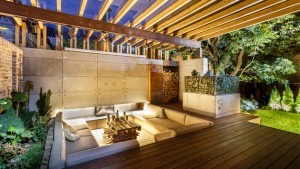
When I Used To Be younger, i am at all times pleased to look an aquarium of fishes. As a matter of truth, we have our personal aquarium – we make the ones for our industry. excluding that, i am much more happy to see a koi pond with its herbal look, not to mention the ones beautiful fishes in it. For me, it is a mere water characteristic and is solely brought for aesthetics, but what I didn’t realize is that it's in reality something that provides value to the house and would also have an affect to the owners of the home besides. Koi ponds are guy-made ponds which might be used for holding koi fishes. The fishes are carp bred that are available variety of sizes and colors and are stocked in decorative ponds. it is regularly as a part of a panorama however could every now and then be delivered in the interior too. Koi ponds can are also designed to promote well being to boot as growth of the Nishikigoi or Eastern Ornamental Carp. In China, a legend a few carp that swam against a dragon gate become a dragon because of its perseverance and staying power. In Japan, these fishes are a logo of masculinity, sure features and the strength to conquer problems. they believe that after you persevere, you support your self. They are also used as a symbol all through Kids’s Day by which households dangle Koi windsocks. you see, koi fishes aren’t just there so as to add a more refreshing entice the realm but it has a deeper which means from other Asian families. Now, allow us to take a glance at some koi ponds that i've collated in your idea.


Cita A herbal man-made pond is observed here with waterfalls. Vegetation and timber are surrounding the area that adds good looks to it. Understand that at the other aspect is a pathway fabricated from stone and a space where an outside dwelling space is found outlined by means of pavers on the floor.

Behr Building Corporate This one is a modern koi pond. As you'll be able to see it has directly traces on it and has a geometric attraction instead of a unfastened form with stones. Here, you'll be able to see the stones on the wall.

Bogs & Kitchens SA look at how shocking this garden is! It has such a lot of bushes and different plants with quite a lot of foliages that also are available in other colors. A wood deck is an even spot to relax even as taking part in the scene.

Ehrich & Ehrich Landscape Architects, Inc. Any Other koi pond with waterfalls and some rocks at the waters. you'll be able to see that this appears herbal too with all of the lotus floating on the water to boot as some grass too.

Exedra Architects When one enters the home, they are greeted by means of koi fishes swimming beneath the wood bridge. in fact, you'll be able to additionally make a selection to not cross right here to boot. Isn’t this a pleasing feature?
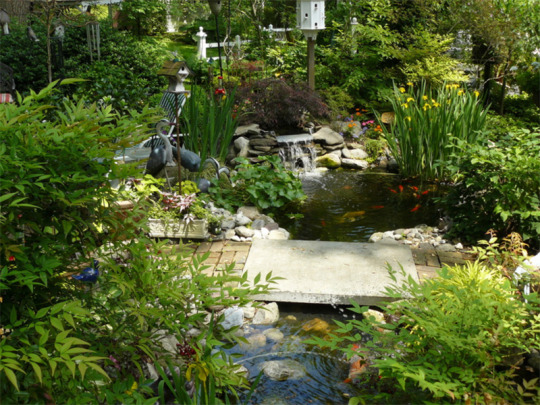
Garrett Churchill Inc. If You have a more spacious pond, then you'll opt for one similar to this! Notice how it used grasses, bushes, stones, planters and plenty of other lawn decors and equipment. the overall may be very shocking and enjoyable!

Teri Fotheringham Photography The Best technique to deliver nature for your garden is to enclose it with plants and water similar to what you'll be able to see right here. With the looks of it, i am positive that one could feel greatly relaxed even as in that Asian cottage.

Pool Environments, Inc. Need to add a koi pond but doesn’t need it to be actually appear to be a “pond”? you'll do it this way. Holiday a a part of your outside flooring and upload some water into it. It looks captivating to the eyes and particularly with the entire floating decors, plants and lighting fixtures on it.
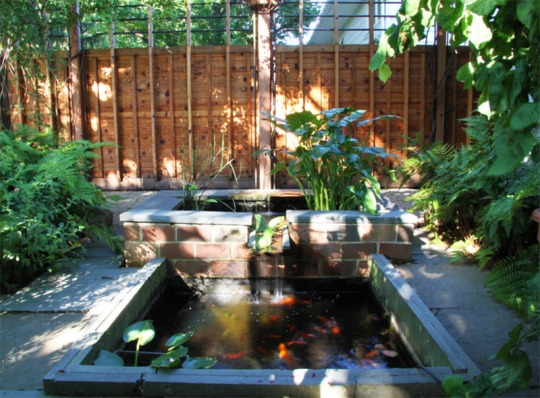
Princeton Layout Collaborative you'll additionally add a square-shaped pond to your garden too the place you'll be able to inventory the koi fishes.
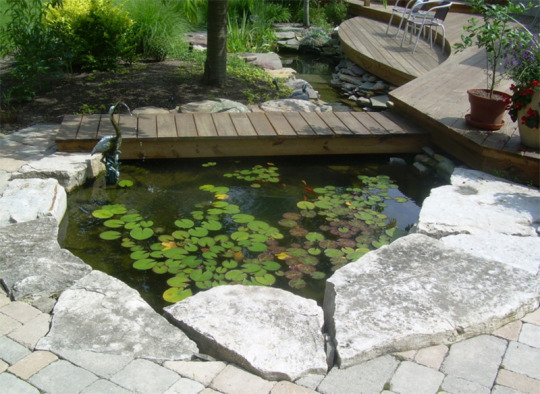
The Artisan Design Crew Some Other natural looking pond the place in a picket bridge directs visitors to a beautifully designed deck fabricated from picket too.

Harold Leidner Landscape Architects A Conventional lawn has a large koi pond. i really like what they did to that part the place the grass created a gorgeous abnormal mosaic-like layout.
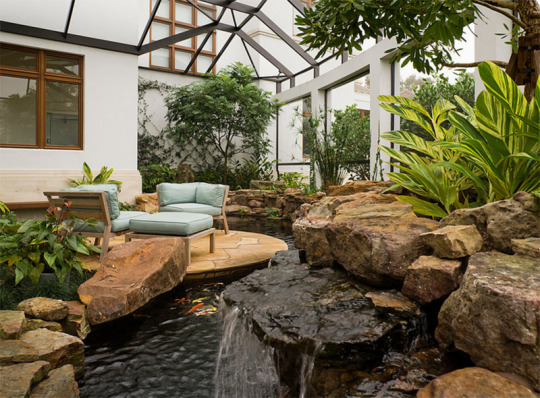
BCB Properties, Inc. For Those Who have a screened garden, you'll be able to still add a pond to it like this one. Notice that it has stones around it as well as plants of varied types. just like the concept of getting a round floor where the chairs are positioned.
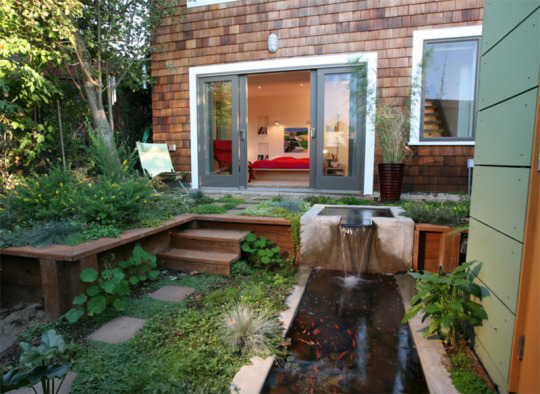
Rossington Architecture Guests are welcomed by way of this koi pond in rectangular form. It has any other water function above it that brings water to this area via a waterfalls.

Aquascape Inc. Rock that natural pond once again with a special style. This looks like it truly is a real pond on account of how it is seamlessly hooked up to the ground. and looking at all of the greens is certainly refreshing to the eyes.

SURROUNDS Panorama Architecture + Building you can also have an elevated pond like this one with extra gorgeous waterfalls that are created with stones and rocks. This certain is a perfect spot for image taking!
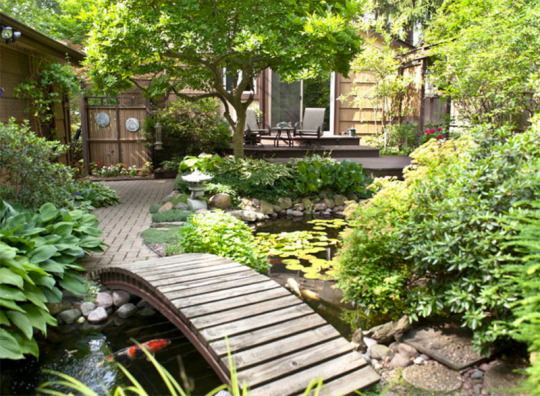
Aquascape Inc. A curvy picket bridge connects the pavers to the garden space however that is not all, beneath the bridge are koi fishes too! this is indeed a spacious lawn as you'll see.

Bercy Chen Studio A Ravishing up to date home has an oblong pond right on its facade. And yes, it will appear like an effortless container with water however with the plants on it and the fishes, it seems to be a whole lot better!
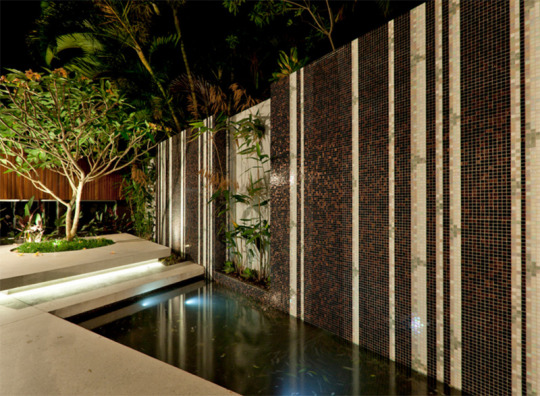
4blue i really like what they did to the wall of this lawn. however it certain is expensive. with the exception of that, they brought a pond on it with a modern layout too. I additionally like that tree which is on an elevated surface that looks as if floating.

Mark Scott Mates | Panorama Structure Completely breathtaking! with the exception of a pool, this additionally incorporated a koi pond on some other a part of the garden. i actually love the look of this one particularly that they experimented with the paperwork even for the pool house.

Active Publicity Images It Appears, this is a Jap house and it's just right to have a koi pond within the lawn. Don’t you like the glance of this one? As what we have seen in the images of Koi ponds above, we have observed that they are available in various designs and styles. you can at all times have a contemporary koi pond or one with a herbal look with stones and even delivered waterfalls. Yes, there are many ways you'll be able to design a koi pond. Simply see to it that it'll match neatly with the look of your garden or your internal. this fashion, you'll be able to provide a unified glance to the world. And it could even deliver a favorable air of mystery to your house and to these residing in it too just like what our Chinese Language and Eastern buddies consider in. However, with or with out custom, a koi pond is certainly one thing that will deliver freshness into the home. Do you could have a koi pond for your garden? Or are you thinking to get one?
Read the full article
0 notes
Photo
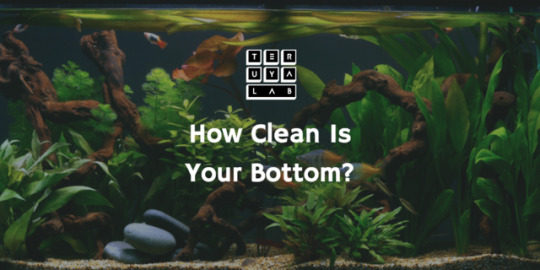
Read more at teruyalab.com
Source: practicalfishkeeping.co.uk
The type of substrate you decide on will have big effect on how much time you’ll need to spend on its maintenance. Our guide will ensure you stay on top of what’s on the bottom.
WORDS: NATHAN HILL
A couple of weeks into owning your set-up, you’re probably looking at the bottom of your layout and thinking ‘that doesn’t look right…’
Different types of substrate need different approaches when it comes to cleaning. If you’ve gone for bleached white sand under a barrage of intense lighting, you’ll probably need to be in there, sifting away daily. If you’ve gone in for a planting substrate, you might never clean it, once.
Here’s how to deal with some of the more readily available substrates out there.

Planting substrates
Controversial, but if you have a tank decked out with high-end, high cost planting substrates like ADA Powersand, you either know what you’re doing or you’ve made a big mistake.
Planting substrates are mainly designed to trap and slowly release nutrients to plant roots, and often come pre-loaded with food — that means ammonia. The moment you start trying to rake through them, you release those nutrients into the water column, and that in turn will lead to an outbreak of algae.
How to clean them
Before going in the tank: Usually you don’t!
Once in the tank: Some aquascapers suggest removing a section of the substrate every few weeks or months, and cleaning before replacing. Others don’t. My own advice is to run a gravel cleaner about an inch above the surface of any exposed parts, so that you lift any waste without disturbing the substrate itself.
Pros
Heaving with nutrients and perfect for almost all kinds of plant growth.
Cons
Useless for burrowing catfish or excessively dirty tanks.
Limited choice of colors and grain size.
Often tends to have a slightly acidic (and rarely alkaline) influence on water chemistry.
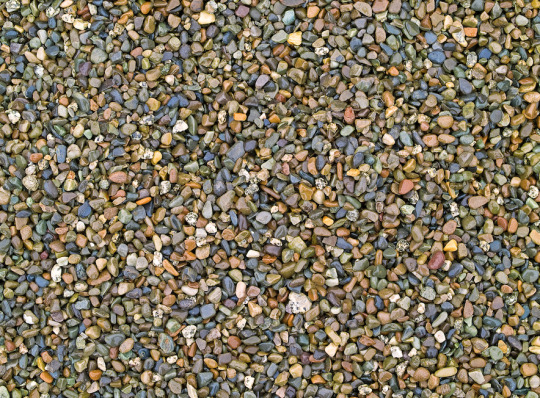
Fine natural gravel
Some modern aquarists might be a bit sniffy about this ‘outdated’ substrate, but it still has its place — by which I mean it is a total breeze to clean.
Gravels, and most famously the classic ‘Dorset pea gravel�� became a hobby staple during a time when tanks relied on undergravel filtration. Subsequently they have found themselves on the fringe of fashion, but many tank owners still persevere!
How to clean it
Before going in the tank: Rinse thoroughly to remove any fine dust. A sieve is fastest, if you blast around 1 or 2kg at a time under a coldwater tap, shaking and swilling like chips in a fryer. Alternatively, place into a bucket and stir continuously while applying running cold water and letting the bucket overflow. Ensure the water is running off clean before draining and adding to the tank.
Once in the tank: Use a gravel cleaner with syphon to draw water out of the tank and plunge the gravel cleaner deep into the gravel at the same time. The water will lift the gravel, swill and rinse it, then when the gravel cleaner is lifted it will drop back out. A battery or air powered vacuum will do a similar job, but less effectively. You’ll need to do this at least every two weeks, though weekly is considerably better. Monitor how dirty the gravel is each time and adjust as needed.
Pros
The easiest gravel to clean by a mile.
Inert in freshwater, rarely causes a slight alkaline elevation.
Looks good in many settings.
Cheap!
Hides obvious small particles of waste from view.
Cons
Awful rooting medium for most plants.
Can harm catfish bristles and burrowing species.
Improper cleaning will lead to nitrate spikes and disease hotbeds.
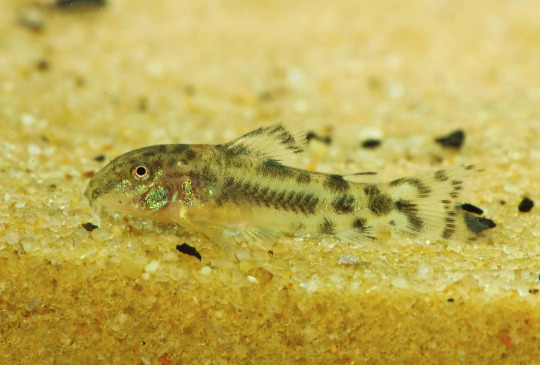
Silver sand
Silver sand is the choice for numerous biotopes, as it’s similar to substrates found in lakes and rivers the world over. It can be bought in almost any aquatic store, and similar looking substitutes like playpit sand are available where it isn’t.
Despite some detractors claiming potential gut or gill problems associated with using it, it remains one of the most popular modern substrates going.
How to clean it
Before going in the tank: Slowly, slowly is the key here. Place around 5–8cm depth in a bucket at a time, and stir continuously and vigorously while flushing with cold water. Note, this stage may take a long time, but you need to be thorough as it is hard to remove sand dust once it is in the tank. Don’t try putting it in a sieve as you’ll lose the lot!
Once in the tank: A gravel cleaner and syphon will just lift the sand out of the tank, though you can use that to your advantage. When particularly dirty, it may pay to remove some sand with a hose this way and rinse it as though going in the tank for the first time — just be careful to limit this to 25% of the total sand, in order not to disrupt filtration. Personally, I like to gently rake my fingers through silver sand on a weekly basis, allowing any muck to lift and drop back down to the surface. Then using a syphon hose, I skim just above the surface of the sand, removing the deposits. This method will result in a fractional loss of sand, which is cheap enough to replace as needed.
Pros
Cheap.
Natural looking.
Great for catfish whiskers and fish that burrow.
Almost always inert, doesn’t affect chemistry.
Many plant roots love it.
Cons
Cannot be used for deep substrates as it can turn anaerobic.
Can look dirty very quickly.
Can find its way into filters easily.
Excitable fish may stir up a tank into a sandstorm.
Strong filter flows may move it, leaving craters and sand drifts.

Colored gravels
Love them, hate them, ignore them, but colored gravels are often part of the appeal for a new fishkeeper. Not all colored substrates are the same, either in size, quality or durability, so even cleaning for the first use can be a disappointment.
Before anything, get some of your proposed gravel, put it in a jug with some water, give it a couple of days and test for ammonia. Some colored gravels are reported to leach ammonia compounds, and if they do, I’d personally bin them — or you can soak them until it goes away.
How to clean them
Before going in the tank: Rinse gently in a colander or sieve under gently running tapwater. In many cases, some of the color will run off, leading the aquarist to panic and stop rinsing. You need to keep going until the water runs clear, but do be gentle! The same problem will arise if placing the gravel in a bucket and stirring while gently flushing. Note that some gravels come coated in a resin that will hold in the color, and for these you can be vigorous, though paradoxically they’ll be amongst the cleanest out of the bag.
Once in the tank: Gravel cleaners and syphons will need to be used at least weekly to keep colored gravel clean. The lighter the color, the quicker algae will start to smother it, and you may find that white gravel only lasts one or two days before needing syphoning again. Be particularly careful with black gravel as it can harbor a lot of solid waste without you noticing, and may turn your tank into a ticking time-bomb of sewage.
Pros
Pretty, if you like that sort of thing.
Easy enough to clean once in place.
Cons
Some fish will freak out over bright substrates.
Some types may contain ammonia sources.
Colors may bleach over time.
Coarse grains will affect catfish and burrowing fish.
Can get dirty very fast.

Coral sand
Coral sand has a limited use these days, being restricted to marine set-ups, and hardwater tanks (usually African). It’s actually the product of fish that eat corals, and pass the tiny coral ‘sand’ fragments out in their feces.
Because it is riddled with calcium carbonate, it will make soft water hard, and subsequently alkaline. Never be inclined to use it in acidic tanks!
How to clean it
Before going in the tank: Place around 5–7cm of sand in a bucket and flush with cold water while stirring vigorously. Ensure all the sand is turned over as you do this. When the water eventually runs clear, the sand is ready for use.
Once in the tank: Use a gravel cleaner and syphon weekly or fortnightly and clean as though you would fine gravel (see previous page). In between syphoning sessions, waste from the surface can be removed with a battery powered gravel vacuum, or by wafting a fine net above it and lifting out any waste.
Pros
Acts as a buffer in hardwater tanks.
Fine enough for some burrowing species such as eels.
Very attractive in the right setting.
Cons
Intense light will cause algae growth.
Useless in acidic and softwater tanks.
Some grades can be very dusty initially, requiring prolonged cleaning.
Fine particles are sometimes implicated in gill problems in some fish.
Top tips for healthier substrates
Never leave the roots of plants behind when extracting them, as they’ll decompose and churn out nitrates. Rather than pulling plants out, try digging them out.
When cleaning substrates before adding them to your tank, use cold water instead of hot. Some substrates can give the illusion of cloudy run-off water when hot water is used, when in reality they are clean. Microbubbles may be a culprit here.
Use nets to remove uneaten food and debris rather than letting it settle on the base.
For marine tanks, lay your sand out thinly on a tray and run over it with a powerful magnet before use. It’s rare, but occasional metal fragments in substrates are not unknown.
The joy of snails! While poorly managed snail populations can become epidemics, having a few Malaysian trumpet snails among the substrate can help turn it over and prevent stagnant patches.
#aquarium#fish tank#freshwater#freshwater article#freshwater aquarium#freshwater tank#aquascape#nature aquarium#planted aquarium#planted tank#aquatic plants#substrate#aquarium substrate#aquarium gravel#gravel#water change#ネイチャーアクアリウム
1 note
·
View note